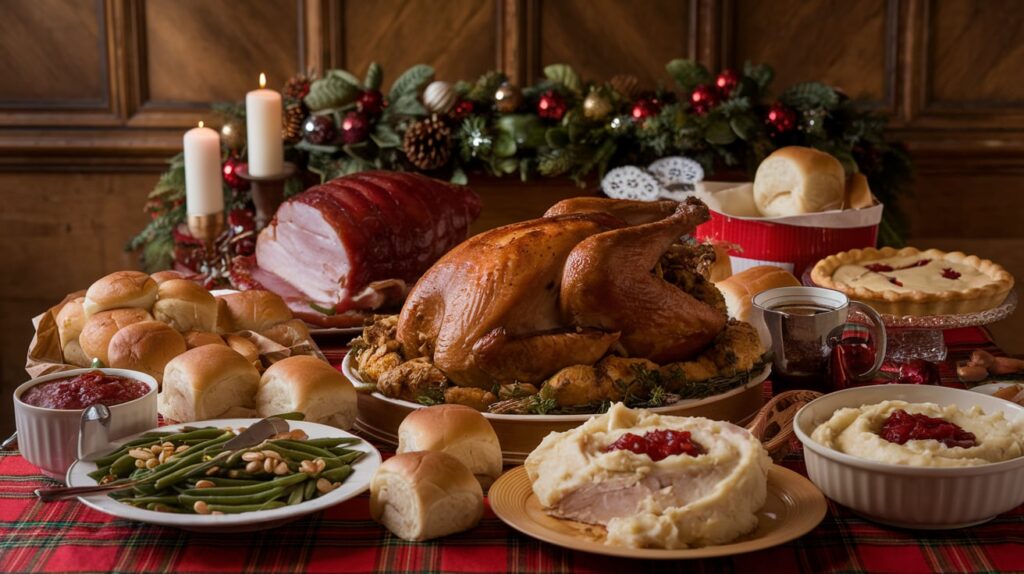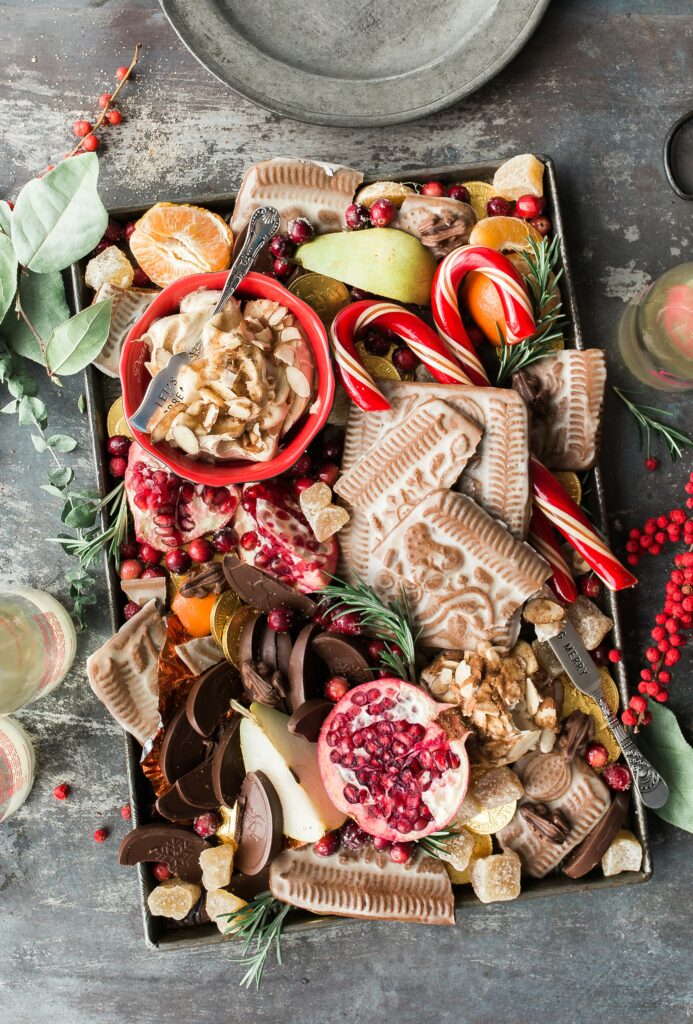Updated: December 4, 2025
What do you picture in your mind when you think of Christmas? For many, it’s the twinkling lights, the smell of pine, and carols wafting through the air. But what was the Christmas like in American colonies? You might find an entirely different scene when the holiday season rolls around. Let’s take a leisure-filled stroll through history and uncover what Christmas was really like in those times.

Table of Contents
The Arrival of Christmas Traditions
Roots of Celebration
In the early days of the American colonies, Christmas was not the grand affair that many indulge in today. The roots of these early celebrations can be traced back to various European traditions. Many of the settlers brought their customs with them, yet the Puritans were particularly vehement in their opposition to the celebration of Christmas. For them, it was a time marked by excess and frivolity, which clashed with their religious beliefs.
A Mix of Cultures
As settlers from different countries arrived, a rich tapestry of customs began to emerge. The Germans brought their Christmas tree tradition, while the English contributed caroling and other festive activities. This mishmash led to a unique colonial Christmas experience, one that varied widely from region to region. Picture yourself living on the fringes of New England compared to the southern colonies; the experiences would have been like switching from a winter wonderland to a milder, simpler holiday.
Changing Perspectives
The Puritans’ Prohibition
During much of the 17th century, some of the more austere colonies, particularly Massachusetts, imposed restrictions on Christmas celebrations. The Puritans even went so far as to outlaw the day. Instead of festivities, you might have found people simply going about their business as if it were any other day of the year.
Flouting the Rules
Interestingly, this did not mean that Christmas was entirely absent from their lives. In secret, many would find ways to celebrate, gathering for clandestine dinners or simply using the day off work for family time. There was a rebellious spirit bubbling under the surface, revealing that the human desire to celebrate is often hard to suppress.
Revivals and Resurgence
As the colonies grew and evolved, so too did their perspectives on Christmas. By the 18th century, attitudes began to shift; Christmas celebrations gradually gained a foothold, particularly as the influence of the Church of England spread. Imagine yourself enjoying a newfound sense of freedom in observing this holiday—a marked contrast to the rigid norms of earlier times.
Christmas Festivities
Decorations and Preparations
When it comes to decorations, the colonial Christmas might not have been as extravagant as today’s displays, but that doesn’t mean they lacked charm. Imagine simple decorations made from natural materials: holly boughs, ivy, and dried fruits. Though you wouldn’t find elaborately strung lights, there would be the warm glow of candles flickering in the windows, inviting in neighbors.

Christmas Trees
That said, Christmas trees weren’t widely adopted in America until the 19th century. Before that, the holiday spirit was expressed through other means. Picture a gathering preparing a feast: the kitchen bustling with activity, women preparing roast meats, and children eagerly awaiting the arrival of various treats. There’s a sense of anticipation that makes the holidays feel special.

The Feast
The Christmas dinner in the colonies was an event closely associated with friends and family, providing an opportunity for everyone to come together. You might expect to see traditional foods on the table, such as:
| Dish | Description |
|---|---|
| Roast Turkey or Goose | A centerpiece dish that everyone looked forward to. |
| Mince Pie | Often sweet, sticky, and filled with a mix of meats and spices. |
| Plum Pudding | A rich, steamed dessert, traditionally served with brandy sauce. |
| Sweet Potato Casserole | A popular dish especially in Southern colonies. |
Of course, drinks played a role too—hard cider and mulled wines were particularly popular during the festive season.
Caroling and Community
The festive spirit in the colonies was not just about food; music and social gatherings were at the heart of the celebrations. Caroling emerged, although often in a more informal setting. Picture neighbors gathering and singing together, sharing songs that expressed joy, goodwill, and the spirit of the season.
Gift-Giving: A Simple Affair
Modest Traditions
Gift-giving during colonial times was not as commercialized as it is today. You might find that gifts were often homemade, calling forth the skills of the craftspeople in your community. A hand-knitted scarf or a jar of homemade preserves expressed thoughtfulness rather than extravagance.
Symbolic Tokens
Sometimes, gifts were symbolic, meant to strengthen bonds of friendship or kinship. Imagine receiving a beautiful wooden toy—a simple yet heartfelt present that reveals the love and effort put into it.

Religion and Christmas
A Time for Reflection
For many colonists, Christmas held profound religious significance. While celebrations varied, the day was often seen as one for prayer and reflection. Going to church might have been a pivotal part of your day, attending services that could be both solemn and joyous.
The Influence of Revival Movements
As the Great Awakening swept through the colonies, there was a renewed emphasis on personal piety and community spirit. This influenced the way many viewed Christmas—it became a day to celebrate faith more openly. Can you imagine the feeling in the church, filled with hymns and prayers, lifting spirits high?
Shifting Attitudes Toward Christmas
The Nineteenth Century
As the colonies approached the 19th century, Christmas began to take on a more festive character. The arrival of immigrants, especially from Germany and Ireland, contributed significantly to this transformation. With the introduction of new customs alongside existing ones, you would find a richer and more celebratory experience emerging.
Santa Claus and Commercialization
By the 1820s and 1830s, the figure of Santa Claus began to take shape, partially influenced by the Dutch Sinterklaas and British Father Christmas. Picture children’s eyes lighting up at the thought of a jolly figure bringing gifts, igniting excitement and curiosity.
The Spread of Commercial Christmas
With the growth of cities and commerce, Christmas began to evolve. By the 19th century, holiday shops popped up, filled with bright and charming decorations. Merchandise designed specifically for Christmas started to appear, creating a new atmosphere around the holiday.

Christmas in Different Colonies
New England
In New England, the legacy of the Puritans left an indelible mark on Christmas celebrations. While they initially suppressed festivities, by the 18th century, you might find that communities began embracing more Christmas markets and fairs, even if the religious focus remained.
The Mid-Atlantic Colonies
In the hardworking towns of the Mid-Atlantic colonies, Christmas offered a welcome break from daily toil. Here, you’ll enjoy community gatherings filled with laughter, storytelling, and the warmth of companionship. The mixture of cultures led to an array of traditions, uniting various backgrounds in celebration.
The Southern Colonies
Life in the southern colonies, with their milder weather, inspired outdoor celebrations. Imagine community feasts under the stars or musically charged gatherings filled with joyful singing and dancing. The plantation culture brought a unique flavor to the Christmas experience, shaped by both European traditions and the influence of enslaved individuals.
The Enduring Spirit of Christmas
Legacy of Colonial Christmas
While many of the customs and traditions changed over the years, the spirit of Christmas in the colonies laid the groundwork for celebrations we recognize today. It spoke to the heart of community, the simple joy of being together, and the beauty of giving.
Personal Reflections
Whether gifts were lavish or humble, the essence of Christmas in the American colonies was alive in the shared experiences—camaraderie, faith, and joy. Even as customs morphed and evolved, the central tenet remained constant: Christmas was about togetherness.
Conclusion: What Was The Christmas Like In American Colonies
As you think back to your own experiences of Christmas, isn’t it fascinating to reflect on how the holiday has transformed over centuries? From modest beginnings in the American colonies to the dazzling displays of modern times, this special day has journeyed through history shaped by culture, community, and love. The spirit of the holiday continues to resonate while bringing people together in meaning and warmth—celebrating not just the season, but each other.

